US Midterms and inequality in four graphs
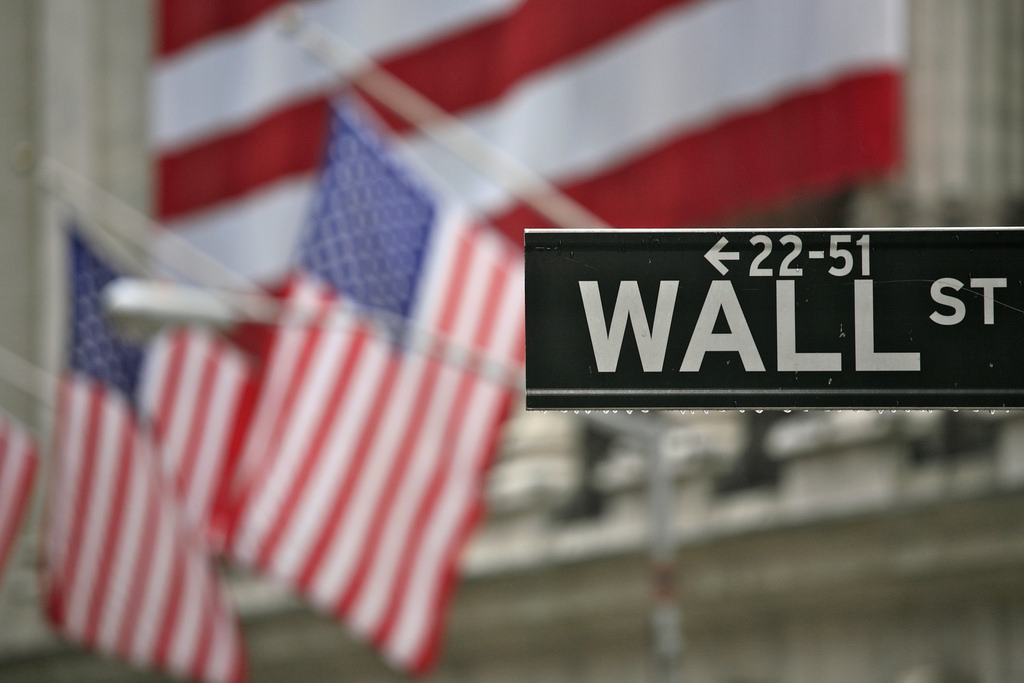
Heading into the US midterm elections, economic inequality is still shaping American politics
Published 30 October 2018
It may not be easy to see in an era dominated by intense culture-war conflict and the controversial actions of President Trump, but the United States is a country that is increasingly struggling with income and wealth inequality, despite its economic might and overall prosperity.
As millions of Americans prepare to vote in the most anticipated midterm elections in decades, they will no doubt in part assess the first two years of the Trump administration’s economic policies and whether the President has – as he claims – “created an incredible economy. I have created so many jobs”.
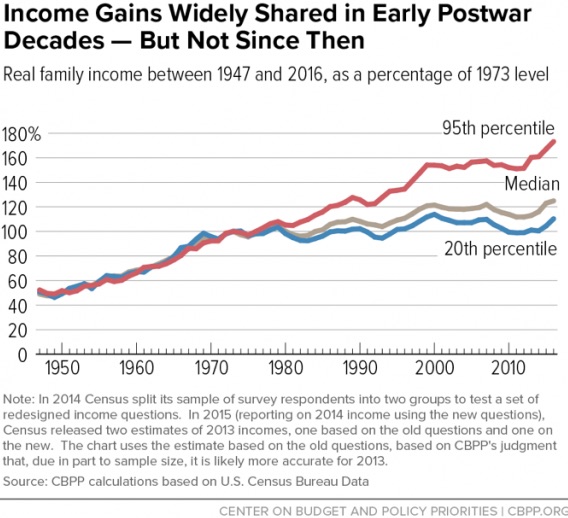
But broad trends that have been developing over many decades which have resulted in increasing economic inequality aren’t easy to change.
The American economy underwent a significant shift in the mid- to late-1970s that laid the groundwork for the anti-establishment and anti-globalisation messages seen in American politics over the last few years.
The thirty years after the end of the Second World War are now seen as an era of shared prosperity. During that time, the gains from America’s increasing prosperity were distributed reasonably equally across those at the bottom, middle, and top of the economic ladder.
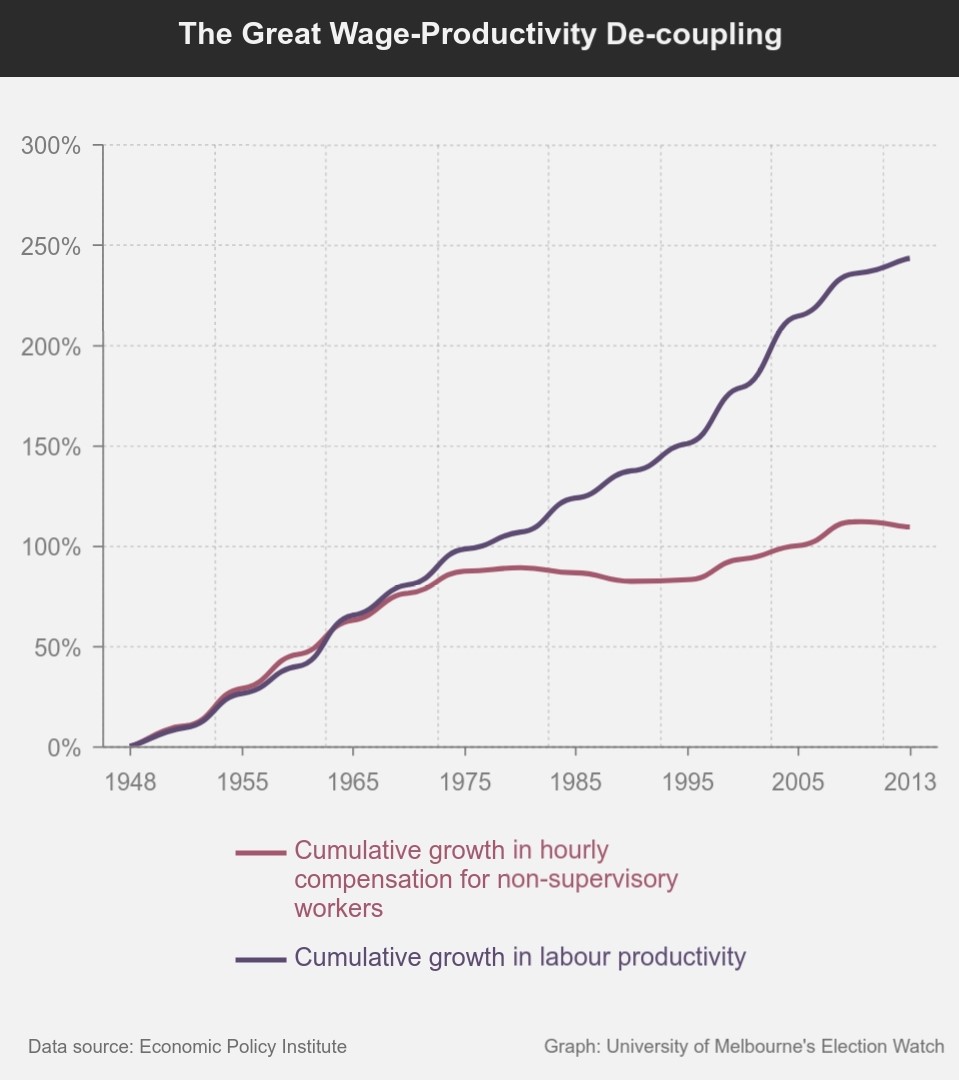
But something, or more likely a number of re-enforcing somethings, began to happen in the 1970s. After regularly rising largely in unison for roughly three decades, the growth in labour productivity and the growth in wages of non-supervisory workers became de-coupled.
Around the same time, the share of all national income (wages, capital gains, etc.) going to the nation’s top 10 per cent began to rise. It is now nearly half of all national income.
Lastly, the concentration of wealth has reached share of total wealth now held by the top 0.1 per cent of Americans is fast approaching the level just prior to the Great Depression of the 1930s.
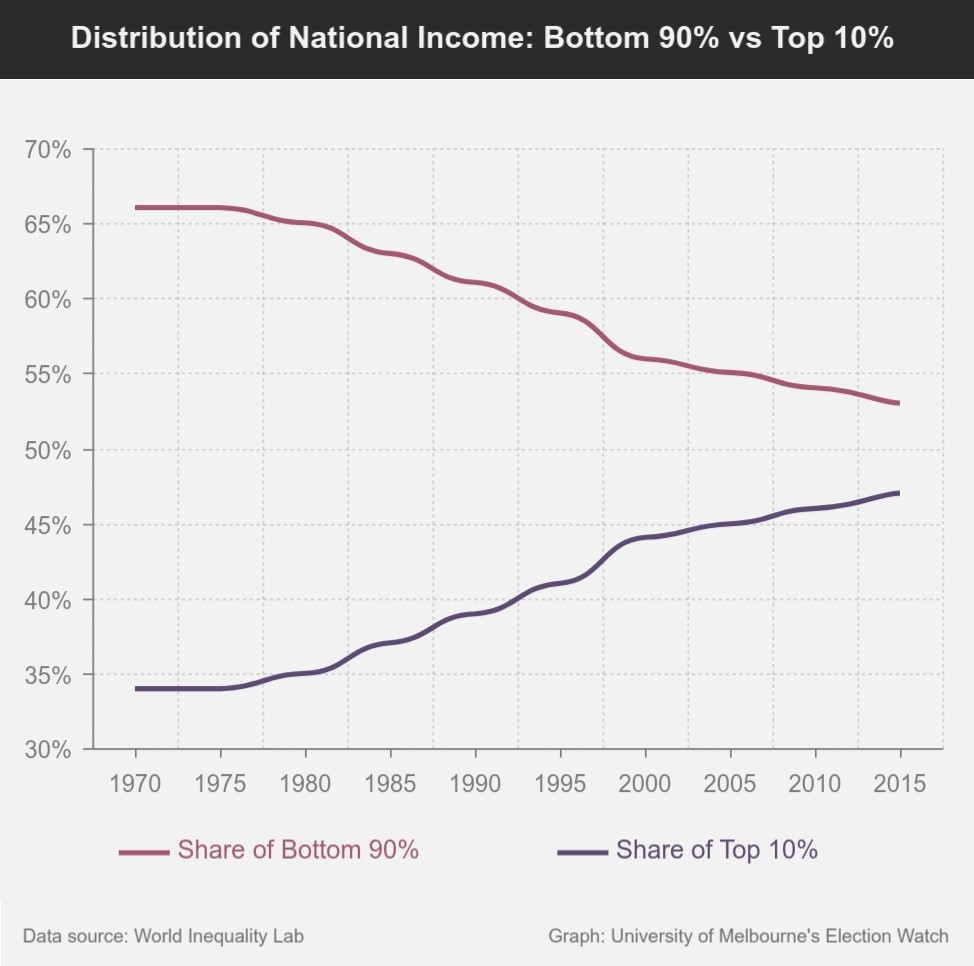
There are plenty of theories on why and how these changes came about including globalisation, the de-unionisation of much of America’s workforce, the capture of the nation’s governance by economic elites, and rapid advances in technology.
These changes and their broad economic impact have generated a dispersed dissatisfaction across different segments of the political spectrum.
One can see support for more government intervention to address these issues from such varied sectors as a significant component of President Trump’s base, to the unexpectedly strong 2016 presidential campaign of self-described democratic socialist Senator Bernie Sanders, to recent efforts to move the Democratic Party leftward on economic policy.
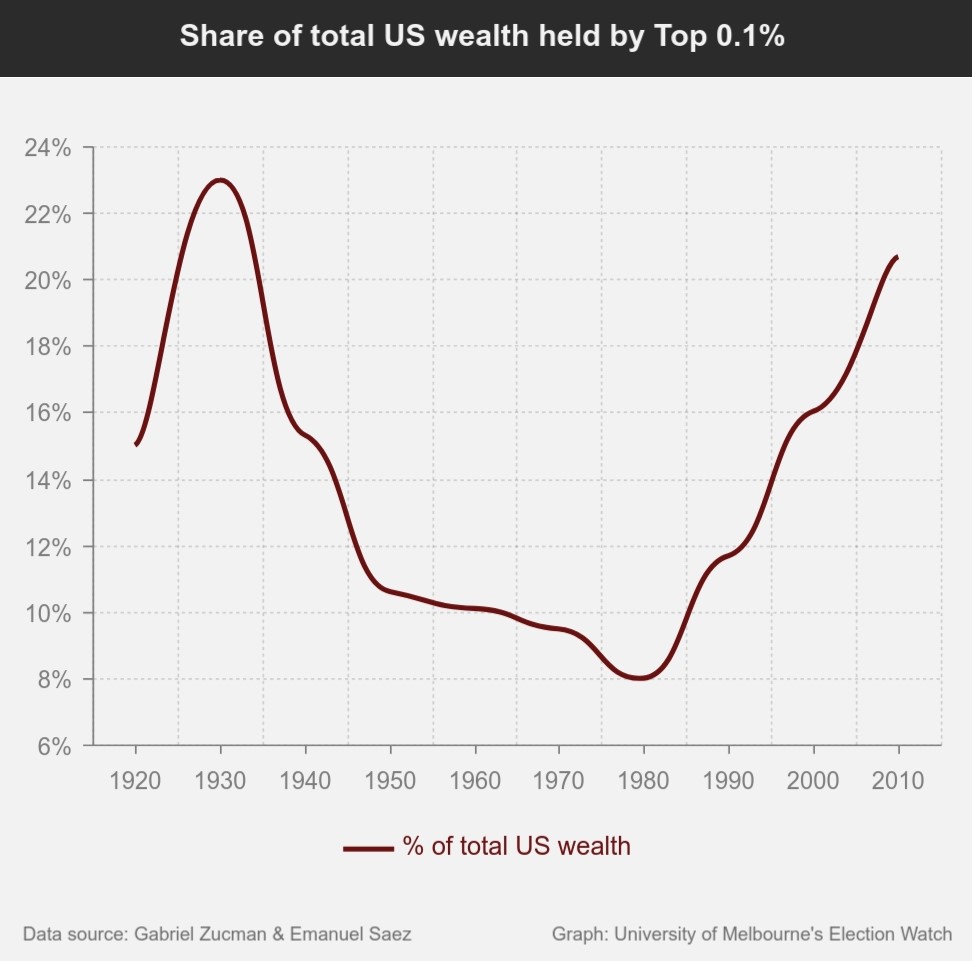
Looking ahead, it is likely that the party or political movement that is best able to articulate the challenges of increasing inequality and to propose broadly supported remedies will find a large and attentive audience.
If successful, this party or movement may re-shape American politics once the culture-war dramas that dominate our current political era subside.
The article is co-published with the University of Melbourne’s Election Watch.
Banner Image: Alex Proimos/Flickr
